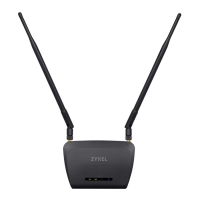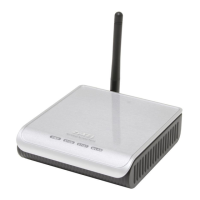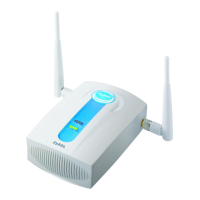Chapter 6 Broadband
VMG3926-B10A User’s Guide
82
The following table describes the labels in this screen.
6.6 Technical Reference
The following section contains additional technical information about the VMG features described in
this chapter.
Encapsulation
Be sure to use the encapsulation method required by your ISP. The VMG can work in bridge mode
or routing mode. When the VMG is in routing mode, it supports the following methods.
IP over Ethernet
IP over Ethernet (IPoE) is an alternative to PPPoE. IP packets are being delivered across an
Ethernet network, without using PPP encapsulation. They are routed between the Ethernet interface
and the WAN interface and then formatted so that they can be understood in a bridged
environment. For instance, it encapsulates routed Ethernet frames into bridged Ethernet cells.
PPP over ATM (PPPoA)
PPPoA stands for Point to Point Protocol over ATM Adaptation Layer 5 (AAL5). A PPPoA connection
functions like a dial-up Internet connection. The VMG encapsulates the PPP session based on
RFC1483 and sends it through an ATM PVC (Permanent Virtual Circuit) to the Internet Service
Provider’s (ISP) DSLAM (digital access multiplexer). Please refer to RFC 2364 for more information
on PPPoA. Refer to RFC 1661 for more information on PPP.
Table 15 Network Setting > Broadband > 802.1x: Edit
LABEL DESCRIPTION
Active This field allows you to activate/deactivate the authentication.
Select this to enable the authentication. Clear this to disable this authentication without
having to delete the entry.
Interface Select an interface to which the authentication applies.
EAP Identity Enter the EAP identity of the authentication.
EAP method This is the EAP method used for this authentication.
Bidirectional
Authentication
Select Enable to allow bidirectional authentication.
Certificate Select the certificate you want to assign to the authentication. You need to import the
certificate in the Security > Certificates > Local Certificates screen.
Trusted CA Select the Trusted CA you want to assign to the authentication. You need to import the
certificate in the Security > Certificates > Trusted CA screen.
OK Click OK to save your changes.
Cancel Click Cancel to exit this screen without saving.

